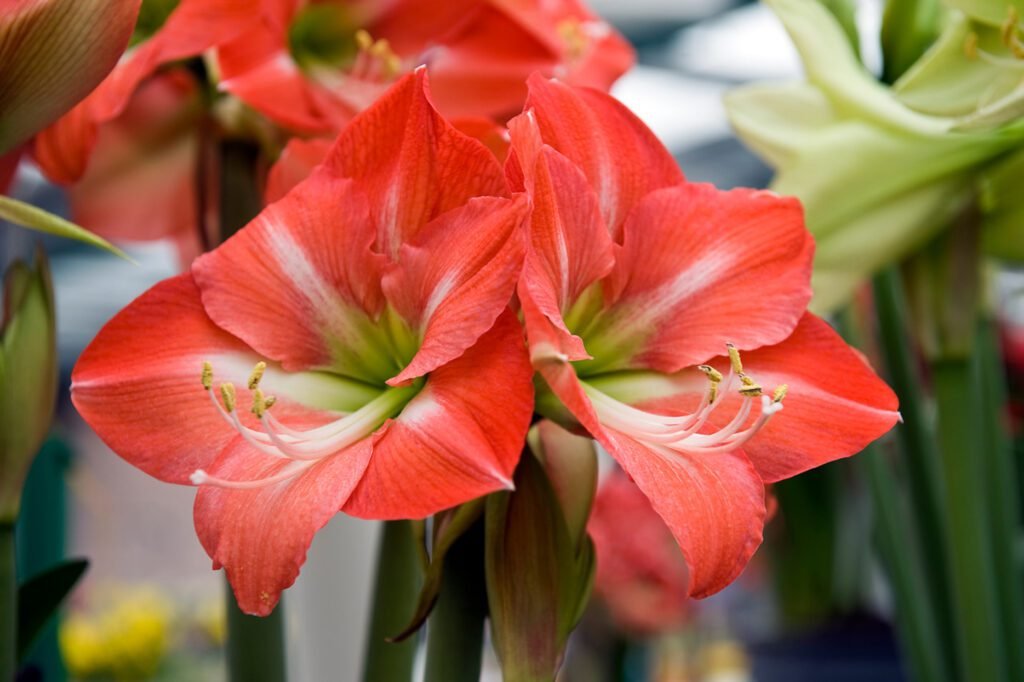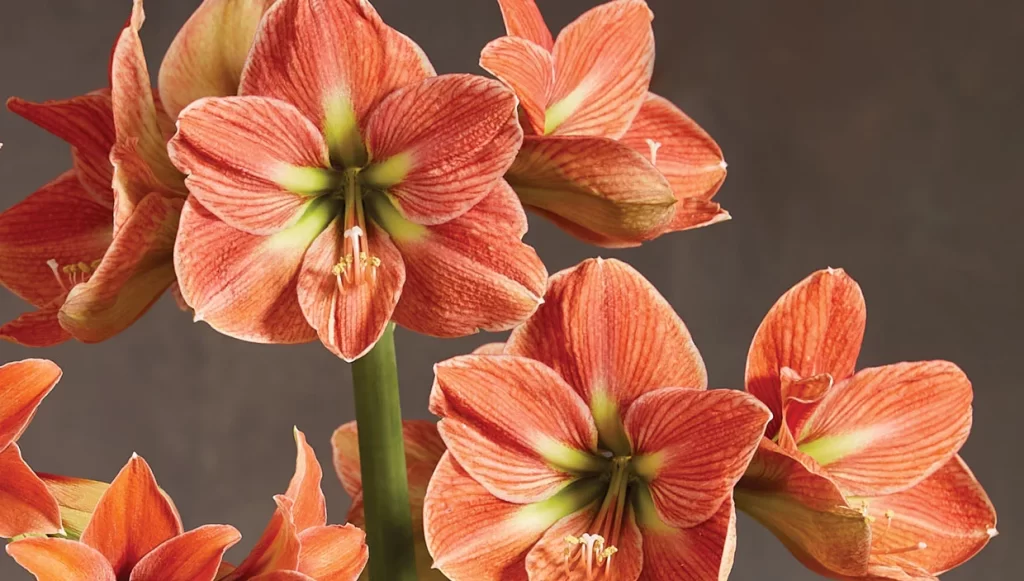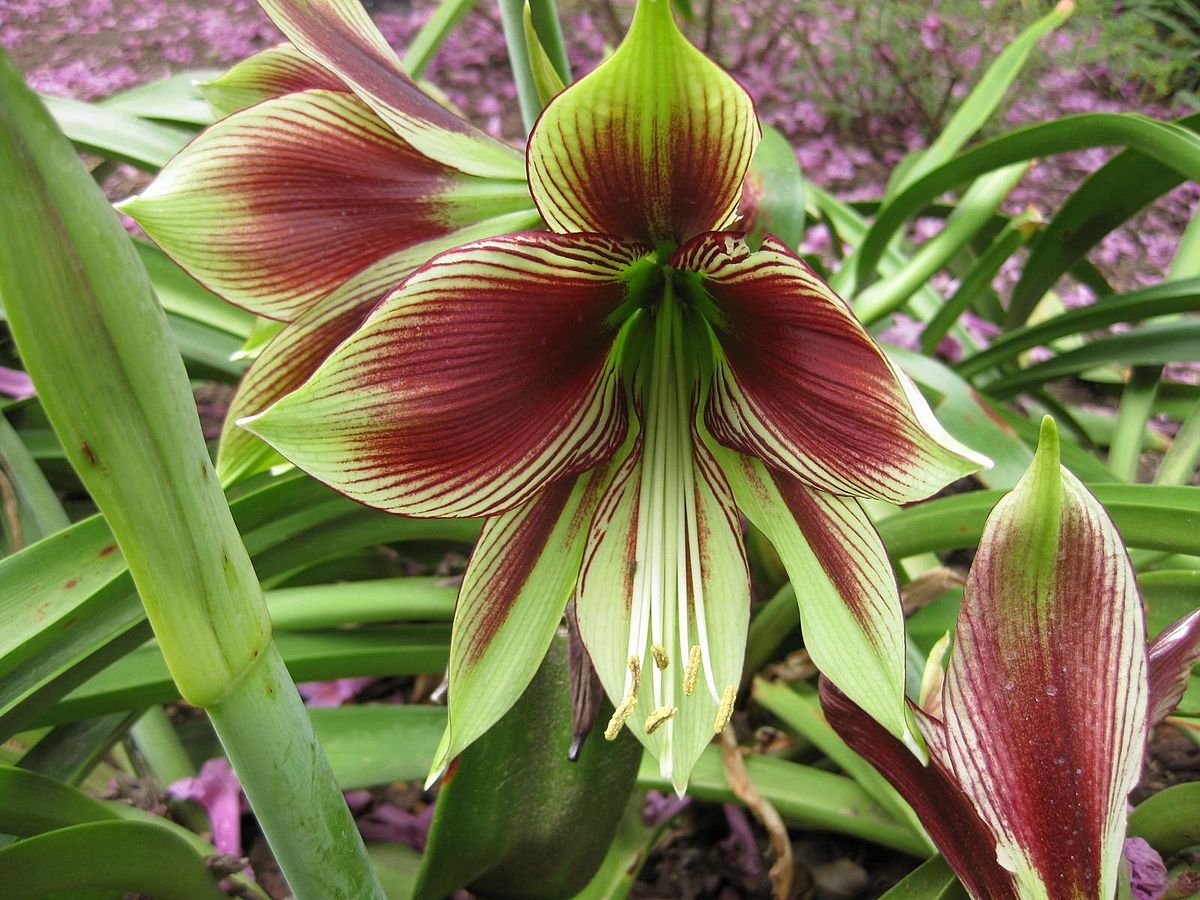Amaryllis Lily is a very easy to grow perennial plant. You can plant this flower in every type of situation. Botanically it belongs to the family Amaryllidaceae. Its botanical name is Amaryllis belladonna.
The plant we commonly name “amaryllis” is a South American native within the genus Hippeastrum. While the true amaryllis or belladonna lilies (Amaryllis spp.) are from South Africa. Both, but, are within the amaryllis circle of relatives (Amaryllidaceae). The genus Hippeastrum is native normally in tropical and subtropical regions. In principal regions of Eastern Brazil and the primary southern Andes. But a few species arise as a ways north as Mexico and the West Indies.
Bulbs with the large flora and robust flower stems to be had in business alternate in recent times had been advanced with the aid of breeders, particularly within the Netherlands, South Africa, US, Japan, and Israel. They are typically hardy in zones 8 to ten.
Each 18-24” tall scape produces two to six massive flora in an umbelliform inflorescence. Two free bracts enclose the terminal flower buds until they bloom. The white, pink, red, salmon, apricot, rose, or bicolor plant life is 6 to 10 inches long. Each trumpet-formed flower has 6 petals. The petals of the species often curve downwards and then upwards at the tip but breeders have modified this feature in order that frequently the tepals open huge and flat.

Planting
Fertilized plant life is accompanied by way of end result that are a trivial pill full of dry, flattened brown or black seeds.
Two to seven long, strap-like, leathery leaves grow up to two toes in length from each bulb. The medium green leaves are smooth and sleek. Commercial “amaryllis” bulbs do not require a resting duration and will bloom if saved evergreen.
Place the potted bulb in a sunny spot at sixty five-70ºF and keep the soil moist. Do not keep the soil wet as the bulb can rot and keeping the bulb at a high temperature can promote weak flower stalks and small flowers. To prolong the bloom period, keep the plant away from direct sunlight and cool temperatures (60-65ºF).
In order to get “amaryllis” to rebloom, they must be kept actively developing once they have finished blooming. Once the leaves begin developing provide shiny mild, water frequently and fertilize month-to-month with a entire houseplant fertilizer applied on the price directed for houseplants.
Keep it as a field plant on a patio or deck, or sink the entire pot inside the floor; because the roots are brittle planting immediately within the floor and digging it up later isn’t always recommended.
Bring the packing containers interior earlier than any risk of frost and save them in a cool, dark place like a basement or closet (forty five-55ºF is ideal) and do not water. Wait till the leaves come to be dry and shrunk to dispose of them. When growth starts offevolved again, typically in overdue October or November, deliver the plant life into the mild. If no new increase appears, they can be pressured to bloom by bringing into the light and resuming watering.

Pests & Disease
Commercial “amaryllis” bulbs have few troubles, but one of the maximum common is red blotch. This ailment, due to the fungus Stagonospora courtesy, impacts the arrival of amaryllis plants. Red spots or blotches change into elongated cankers with pink borders on the base of the flower stalks and emerging leaves. Leaves may also come to be distorted and the flower stalks may additionally ruin effortlessly but the ailment hardly ever kills a plant. Inspect bulbs carefully to make sure there aren’t any pink marks at the inner layers of the bulbs and use a sterile potting medium, however, if the ailment occurs, the bulbs may be dealt with with a systemic fungicide. Mealybugs also can infest the plant life.
There are loads of cultivars of “amaryllis” available commercially. Most produce flora within the crimson and white range, however, there are a few in yellow or faded inexperienced colorings. Some are more than one shade, with mottling, recognizing, stripes or picot at the petals. While others have extra reported color on the upper petals than the decrease ones.
I hope you like this post, please give a feedback in the comment box.

